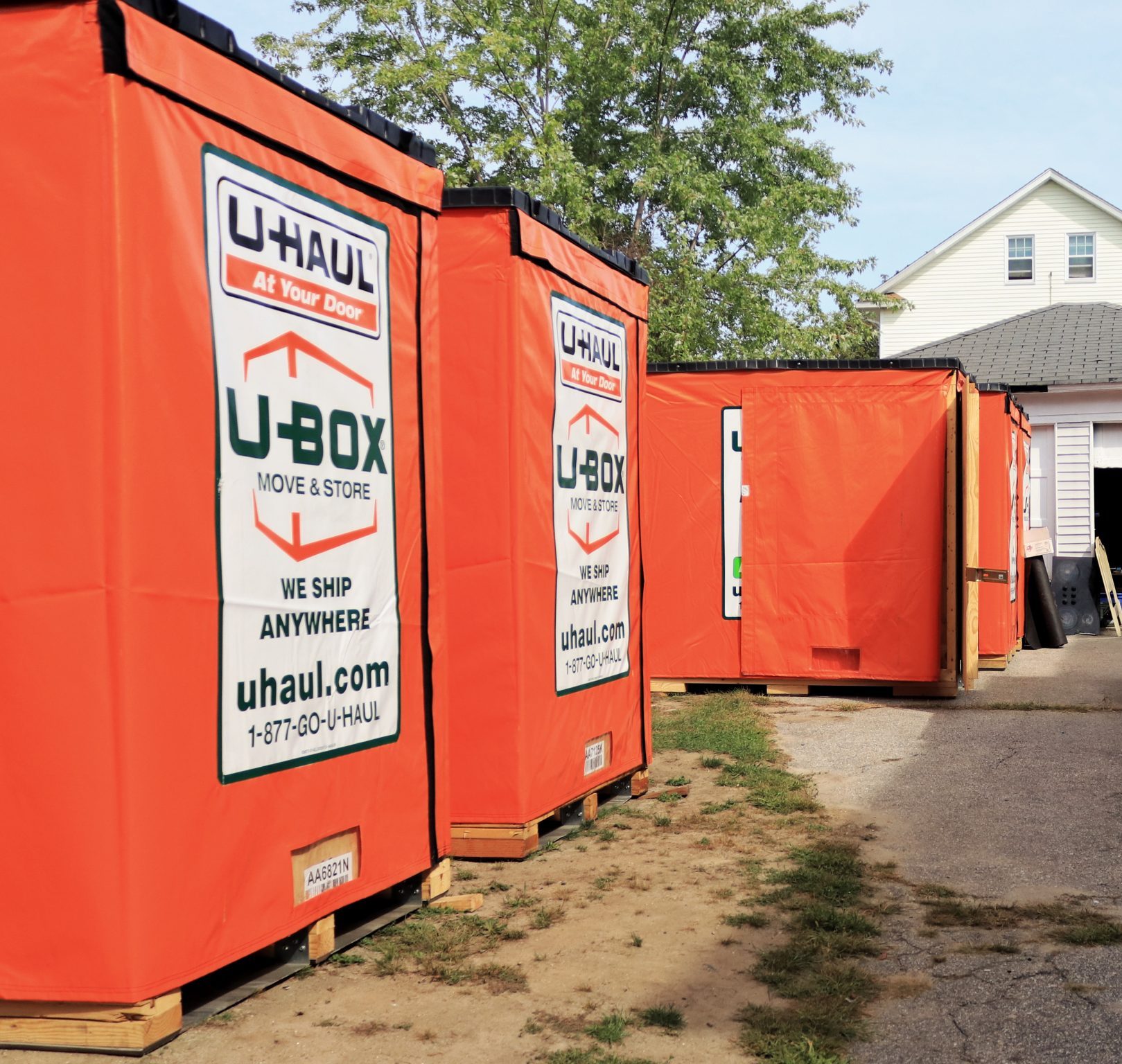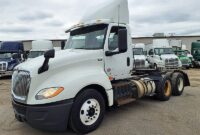U-Haul Trailer Size: Your Comprehensive Guide to Choosing the Right Hauling Solution cars.truckstrend.com
Moving, decluttering, or embarking on a DIY project often involves transporting items too large for your personal vehicle. This is where U-Haul trailers step in, offering a versatile and cost-effective solution for a myriad of hauling needs. However, the sheer variety of U-Haul trailer sizes can be daunting, leading many to wonder: "Which U-Haul trailer size is right for me?"
Choosing the correct U-Haul trailer size is paramount not just for efficiency and convenience, but also for safety and cost-effectiveness. An undersized trailer means multiple trips, potential damage to belongings due to overcrowding, or even dangerous overloading. Conversely, an oversized trailer can be harder to maneuver, consume more fuel, and cost more than necessary. This comprehensive guide will demystify U-Haul trailer sizes, providing you with the knowledge and insights needed to make an informed decision for your next move or hauling project.
U-Haul Trailer Size: Your Comprehensive Guide to Choosing the Right Hauling Solution
Understanding U-Haul Trailer Types
Before delving into specific dimensions, it’s essential to understand the different categories of trailers U-Haul offers. Each type is designed for distinct purposes, from protecting your furniture to hauling vehicles.
- Cargo Trailers (Enclosed Trailers): These are fully enclosed trailers, offering protection from weather elements and enhanced security for your belongings. They are ideal for household goods, electronics, and anything that needs to stay dry and secure.
- Utility Trailers (Open Trailers): As the name suggests, these trailers are open, featuring a flatbed with sides. They are perfect for hauling irregularly shaped items, landscaping materials, construction debris, ATVs, or motorcycles. Their open design allows for taller items and easier loading/unloading of heavy equipment.
- Car Trailers (Vehicle Transports): Designed specifically for transporting vehicles, this category includes two main types:
- Auto Transports: These are full flatbed trailers where all four wheels of the vehicle rest on the trailer. They are suitable for most cars, SUVs, and even light trucks, especially those with all-wheel drive (AWD) or four-wheel drive (4WD) that cannot be flat-towed or towed with a dolly.
- Tow Dollies: These are two-wheel trailers that lift the front wheels of a vehicle off the ground, allowing the rear wheels to remain on the road. They are generally lighter and more affordable, best suited for front-wheel drive (FWD) vehicles, or rear-wheel drive (RWD) vehicles if the driveshaft is disconnected.

Knowing the basic function of each type is the first step in narrowing down your options.
Detailed Breakdown of U-Haul Cargo Trailer Sizes
U-Haul’s enclosed cargo trailers are the workhorses for most residential moves. They come in a few standardized sizes, each designed to accommodate different volumes of belongings.
1. 4′ x 8′ Cargo Trailer
- Interior Dimensions: Approximately 8′ long x 4′ wide x 4′ high
- Cubic Feet: Approximately 160 cubic feet
- Approximate Capacity: Ideal for a small studio apartment, dorm room, or transporting a few pieces of furniture and boxes. It’s often used for local moves or as an addition to a larger truck for overflow items.
- Common Uses: College dorm moves, small furniture delivery, hauling personal belongings, gardening tools.
- Features: Lightweight, easy to tow with most vehicles (check towing capacity), low loading deck.
2. 5′ x 8′ Cargo Trailer
- Interior Dimensions: Approximately 8′ long x 5′ wide x 5′ high
- Cubic Feet: Approximately 250 cubic feet
- Approximate Capacity: Suitable for a studio or a small 1-bedroom apartment. It can typically hold a queen-size bed, a dresser, a few boxes, and some small appliances.
- Common Uses: Small apartment moves, transporting appliances, furniture, and boxes for short distances.
- Features: Single axle, relatively easy to maneuver, good for local moves where a truck might be overkill.
3. 6′ x 12′ Cargo Trailer
- Interior Dimensions: Approximately 12′ long x 6′ wide x 5.5′ high
- Cubic Feet: Approximately 396 cubic feet
- Approximate Capacity: This is one of the most popular sizes, capable of handling a 1-2 bedroom apartment or a small house. It can accommodate larger items like a king-size bed, sofa, dining table, and numerous boxes.
- Common Uses: Mid-sized apartment or small house moves, hauling significant amounts of furniture, appliances, or business equipment.
- Features: Tandem axle for better stability and weight distribution, equipped with a low-loading ramp for easier loading of heavy items, and often includes a heavy-duty ramp.
Important Note on Cargo Trailers: While their interior dimensions provide a general idea, always consider the shape and bulkiness of your items. Tall items might not fit, and odd-shaped furniture can take up more space than anticipated.
Detailed Breakdown of U-Haul Utility Trailer Sizes
U-Haul’s utility trailers are designed for open-air transport, making them ideal for items that are bulky, dirty, or simply don’t fit into an enclosed space.
1. 4′ x 7′ Utility Trailer
- Bed Dimensions: Approximately 7′ long x 4′ wide
- Approximate Capacity: Smallest utility trailer, perfect for hauling landscaping materials, a few pieces of lumber, or a small ATV/motorcycle.
- Common Uses: Yard waste, mulch, gravel, small equipment, a single motorcycle.
- Features: Low sides, open top, lightweight, easy to tow with many vehicles.
2. 5′ x 8′ Utility Trailer
- Bed Dimensions: Approximately 8′ long x 5′ wide
- Approximate Capacity: A versatile option for larger DIY projects, small equipment, or multiple motorcycles/ATVs.
- Common Uses: Landscaping projects, moving appliances, furniture, multiple motorcycles or ATVs, small construction debris.
- Features: Low loading ramp for easy access, sturdy construction.
3. 6′ x 12′ Utility Trailer
- Bed Dimensions: Approximately 12′ long x 6′ wide
- Approximate Capacity: The largest utility trailer, suitable for significant hauling tasks, multiple large items, or a substantial amount of materials.
- Common Uses: Large landscaping projects, hauling riding lawnmowers, large ATVs, multiple dirt bikes, bulky furniture, construction materials (lumber, drywall).
- Features: Heavy-duty construction, often includes a robust ramp, tandem axle for stability with heavier loads.
Detailed Breakdown of U-Haul Car Trailer Sizes
Transporting a vehicle requires specialized equipment. U-Haul offers two primary options, each with specific applications.
1. Auto Transport
- Platform Dimensions: Varies slightly but generally accommodates vehicles up to 79.25" wide at the front axle and a wheelbase of up to 133".
- Weight Capacity: Typically up to 5,290 lbs. (trailer curb weight is about 2,210 lbs, max gross weight 7,500 lbs).
- Common Uses: Transporting cars, SUVs, and light trucks over long distances. Essential for AWD/4WD vehicles or those that cannot be towed with two wheels on the ground.
- Features: Full flatbed for all four wheels, hydraulic surge brakes for stopping power, tie-down straps for secure transport, loading ramps. Requires a robust tow vehicle.
2. Tow Dolly
- Vehicle Compatibility: Fits most vehicles with a maximum width of 79" and a maximum gross vehicle weight of 4,000 lbs (or 3,000 lbs if the towed vehicle weighs more than the tow vehicle).
- Weight Capacity: Up to 3,900 lbs (trailer curb weight is about 750 lbs, max gross weight 4,650 lbs).
- Common Uses: Transporting front-wheel drive (FWD) vehicles, or rear-wheel drive (RWD) vehicles if the drive shaft is disconnected. Ideal for shorter distances or when a full auto transport isn’t necessary.
- Features: Lifts two wheels off the ground, lighter and more maneuverable than an auto transport, often more affordable.
How to Choose the Right U-Haul Trailer Size
Selecting the perfect trailer involves more than just guessing. Follow these steps for an informed decision:
-
Assess Your Belongings (for Cargo/Utility Trailers):
- Inventory Everything: Make a detailed list of all items you plan to move. Don’t forget garage items, outdoor furniture, and shed contents.
- Measure Large Items: Note the dimensions of your largest furniture pieces (sofa, bed frames, dining table, appliances). This is crucial for ensuring they fit through the trailer door and lie flat.
- Estimate Volume: Try to visualize your belongings in a confined space. Online cubic foot calculators or U-Haul’s room-by-room estimator can be helpful. When in doubt, it’s often safer to go a size up than to run out of space.
-
Verify Your Vehicle’s Towing Capacity:
- This is the most critical factor for safety. Your tow vehicle (car, SUV, truck) must be capable of safely pulling the combined weight of the trailer and its contents.
- Where to Find It: Check your vehicle’s owner’s manual, the sticker on the driver’s side door jamb, or the manufacturer’s website.
- Gross Combined Weight Rating (GCWR): Understand that this includes the weight of your vehicle, its occupants, cargo, the trailer, and the trailer’s cargo. Never exceed this limit.
- Tongue Weight: This is the downward force exerted by the trailer’s tongue on the hitch ball. It should ideally be 10-15% of the total loaded trailer weight for stable towing.
-
Consider the Journey:
- Distance: For very long distances, a larger, more stable trailer (like a tandem axle 6’x12′ cargo trailer) might be more comfortable and safer.
- Terrain: Hilly or mountainous terrain will put more strain on your tow vehicle. Ensure your vehicle’s towing capacity is well above the required amount for such conditions.
-
Hitch and Electrical Requirements:
- Hitch Receiver: Your vehicle needs a properly installed hitch receiver (Class I, II, III, etc.) that matches the trailer’s tongue weight and gross trailer weight.
- Hitch Ball: Ensure you have the correct size hitch ball (usually 1 7/8" or 2" for U-Haul trailers) and that it’s rated for the trailer’s weight.
- Wiring Harness: Your vehicle must have a working 4-flat wire harness for trailer lights (turn signals, brake lights, running lights). U-Haul can provide adaptors or install wiring if needed.
Important Considerations Before Renting
- Booking in Advance: Especially during peak moving seasons (summer, end of month), trailers can be in high demand. Book your preferred size and type well in advance.
- One-Way vs. Round Trip: U-Haul offers both. One-way rentals allow you to pick up in one location and drop off in another, but they are typically more expensive than round-trip (local) rentals.
- Insurance: U-Haul offers supplemental coverage like "Safemove" or "Safemove Plus" to protect your belongings and provide damage waivers for the trailer. Check your personal auto or homeowner’s insurance policy to see if they cover towed trailers before deciding on U-Haul’s options.
- Practice Towing: If you’re new to towing, practice in an empty parking lot. Learn how to turn wide, brake earlier, and especially how to back up with a trailer.
Tips for a Smooth Towing Experience
- Load Properly: Distribute weight evenly, with approximately 60% of the weight in the front half of the trailer to ensure proper tongue weight. Secure all items to prevent shifting during transit.
- Check Tire Pressure: Before departing, ensure the tires on both your tow vehicle and the trailer are inflated to the recommended pressure.
- Perform a Pre-Trip Inspection: Check lights, connections, safety chains, and tire condition.
- Drive Slower: Reduce your speed, especially on curves and during adverse weather. Trailer sway can be dangerous.
- Increase Braking Distance: It takes longer to stop with a trailer. Maintain a greater following distance.
- Wide Turns: Remember the trailer will cut corners. Make wider turns than usual to avoid hitting curbs or other obstacles.
- Fuel Efficiency: Expect a decrease in your vehicle’s fuel economy when towing.
Potential Challenges and Solutions
- Overloading: This is a major safety hazard, leading to poor handling, tire blowouts, and potential legal issues.
- Solution: Never exceed the trailer’s or your vehicle’s weight capacity. If you have too much, rent a larger trailer or make multiple trips.
- Incorrect Hitch/Wiring: Using the wrong size ball or having faulty wiring can lead to dangerous detachments or non-functional lights.
- Solution: Double-check all components before leaving the U-Haul center. U-Haul staff can assist with proper hook-up.
- Trailer Sway: This can occur due to improper loading, excessive speed, or strong winds.
- Solution: Slow down immediately, gently apply the tow vehicle’s brakes (not the trailer’s if it has separate controls), and correct loading for proper tongue weight.
- Availability Issues: Popular sizes can be scarce, especially during peak times.
- Solution: Book as far in advance as possible. Be flexible with pick-up times or consider slightly different sizes if your primary choice isn’t available.
U-Haul Trailer Size and Estimated Price Table
Please note: Prices for U-Haul rentals can vary significantly based on location, demand, duration of rental (daily vs. multi-day), and whether it’s a local or one-way rental. The prices below are estimates and subject to change. Always check the official U-Haul website or contact a local dealer for the most accurate and up-to-date pricing.
| Trailer Type | Size (Dimensions) | Approx. Capacity (Cubic Feet) | Est. Daily Rental (Local) | Est. One-Way Rental (Starting From) |
|---|---|---|---|---|
| Cargo Trailers | ||||
| 4′ x 8′ (Enclosed) | 160 cu. ft. | $14.95 – $19.95 | $150 – $350+ | |
| 5′ x 8′ (Enclosed) | 250 cu. ft. | $19.95 – $24.95 | $175 – $450+ | |
| 6′ x 12′ (Enclosed) | 396 cu. ft. | $29.95 – $34.95 | $250 – $600+ | |
| Utility Trailers | ||||
| 4′ x 7′ (Open) | N/A (open bed) | $14.95 – $19.95 | Local only (typically) | |
| 5′ x 8′ (Open) | N/A (open bed) | $19.95 – $24.95 | Local only (typically) | |
| 6′ x 12′ (Open) | N/A (open bed) | $29.95 – $34.95 | Local only (typically) | |
| Car Trailers | ||||
| Tow Dolly | N/A (for vehicles) | $39.95 – $49.95 | $100 – $300+ | |
| Auto Transport (Flatbed) | N/A (for vehicles) | $54.95 – $64.95 | $200 – $800+ |
Note: One-way rental prices are highly variable based on distance, demand, and season. Local rentals are usually on a daily rate. Always verify pricing with U-Haul directly.
Frequently Asked Questions (FAQ)
Q1: Do I need a special driver’s license to tow a U-Haul trailer?
A1: In most U.S. states and Canadian provinces, a standard Class D (or equivalent) driver’s license is sufficient for towing U-Haul trailers, as their gross vehicle weight ratings generally fall below the thresholds requiring a Commercial Driver’s License (CDL). However, always check your local Department of Motor Vehicles (DMV) regulations.
Q2: Can I tow a U-Haul trailer with any vehicle?
A2: No. Your vehicle must have the appropriate towing capacity, a compatible hitch receiver, a hitch ball of the correct size, and a working wiring harness for the trailer lights. Refer to your vehicle’s owner’s manual for its specific towing limits.
Q3: What kind of hitch do I need for a U-Haul trailer?
A3: Most U-Haul trailers require a 1-7/8" or 2" diameter hitch ball, mounted on a hitch receiver that matches or exceeds the trailer’s Gross Trailer Weight Rating (GTWR) and tongue weight. U-Haul centers can help you determine the correct setup for your vehicle.
Q4: Are U-Haul cargo trailers waterproof?
A4: U-Haul cargo trailers are designed to be weather-resistant and protect your belongings from rain and elements. While they are generally very effective, it’s always wise to pack sensitive items in plastic bins or wrap them for extra protection, especially during heavy downpours.
Q5: Can I rent a trailer one-way?
A5: Yes, U-Haul offers one-way rentals for its cargo trailers (4×8, 5×8, 6×12) and car trailers (Auto Transports and Tow Dollies). Utility trailers are typically for local, round-trip rentals only. One-way rentals are generally more expensive due to logistics.
Q6: What’s the difference between an auto transport and a tow dolly?
A6: An auto transport is a full flatbed trailer that carries all four wheels of your vehicle off the ground, suitable for most cars and essential for AWD/4WD vehicles. A tow dolly lifts only the front two wheels of your vehicle off the ground, with the rear wheels remaining on the road. Tow dollies are generally lighter and better for FWD vehicles.
Q7: How do I know my vehicle’s towing capacity?
A7: Your vehicle’s towing capacity is typically listed in the owner’s manual. You can also often find a sticker on the driver’s side door jamb or on the hitch itself. Online resources from your vehicle’s manufacturer can also provide this information.
Q8: Are brakes required on U-Haul trailers?
A8: U-Haul’s larger trailers, particularly the 6’x12′ cargo trailers and all Auto Transports, are equipped with hydraulic surge brakes that activate automatically when the tow vehicle slows down. Smaller trailers generally rely on the tow vehicle’s braking system.
Conclusion
Navigating the various U-Haul trailer sizes doesn’t have to be complicated. By understanding the different types of trailers, accurately assessing your hauling needs, and rigorously checking your tow vehicle’s capabilities, you can confidently select the perfect U-Haul trailer for your project. Remember that safety is paramount, so never compromise on proper loading, hitching, and adherence to towing guidelines. With the right preparation and the ideal U-Haul trailer size, your next move or hauling task will be a smooth and successful one.



